This post was updated on May 9, 2025
Hi! I am Scott Paul, a leading exterior restoration contractor and business owner with over 30 years of experience in exterior wood staining and restoration. My simple deck stain facts and tips are based on my history as a wood restoration contractor. See here for more info about me.
Question: Which Deck Stain Lasts the Longest?
My Pro Advice On Longest Lasting Stain
No deck stain can last forever. The best you will get on a horizontal deck surface is 2-3 years and 4-7 years on vertical surfaces like wood railings and wood-sided homes. Since nothing lasts forever, you really should be asking, “Which Deck Stain is Easiest to Maintain” while giving the longest life possible.
Why Penetrating Deck Stains Are Best
Our favorite deck stains have always been penetrating semi-transparent and semi-solid stains. These stain types allow the wood grain to show, and if they truly soak into the wood grain, reapplying is easier down the road by cleaning and recoating as needed. There is no need to strip or sand, and even if you do have to strip, that can easily be done!
How to Choose the Most Long-Lasting Deck Stain for Your Home
Wood decks are subjected to a host of challenging elements that can create damage such as rotting, splintering, fading, and cracking. A long-lasting deck stain is needed to provide ongoing protection against the damage caused by moisture, mildew, UV rays, or bird droppings. A quality stain that deeply penetrates should last two to three years on horizontal surfaces and four to six years on vertical surfaces.
Aside from longevity, it is also important to choose a stain that is best suited for your deck’s age, current condition, and regional climate. Be sure to check out my post about choosing the appropriate stain for your deck.
Key Takeaways for Choosing the Best Deck Stain
- No deck stain will last forever.
- I’ve found that penetrating, semi-transparent, and a semi-solid deck stains offer the best combination of benefits
- Key factors that affect the longevity of a deck stain include moisture, sun exposure, and foot traffic.
- Clear and transparent stains offer limited UV protection and typically last for only one year.
- Choose a deck stain that is most appropriate for your deck’s current condition and climate.
What Affects the Longevity of Your Deck Stain?
How long does deck stain last? Solid stains should last for two to three years on horizontal wood surfaces and four to six years on vertical surfaces such as railings and trim. Fully transparent stains will likely need to be reapplied after one year. High-quality, deeply penetrating semi-transparent, and semi-solid stains generally provide the best balance between longevity and appearance.
Does staining a deck make it last longer? Yes. Deck stains repel water to prevent moisture damage, contain UV blockers to prevent sun damage, and fungicides, mildewcides, or zinc oxide to stop mold and mildew.
By Stain Type
Solid: With a “paint-like” consistency, solid stains typically offer good UV protection and help to conceal flaws and imperfections. If they penetrate poorly or are overapplied, solid stains are susceptible to flaking and peeling.
Semi-Solid: Because they contain high amounts of pigment, semi-solid stains provide good UV protection and will mask some flaws or imperfections. I recommend using oil-based semi-solid stains rather than water-based options.
Semi-Transparent: A semi-transparent stain will both highlight the wood’s natural wood finish and offer protection from the elements. Oil-based options typically will penetrate and protect better than water-based products.
Transparent: Lacking much pigment, transparent stains allow visibility of the wood’s natural beauty. Plan on needing to recoat your deck each year when choosing transparent options.
By Stain Base
Oil-based stains had traditionally largely dominated the market. In the 1990s, environmental concerns regarding harmful volatile organic compounds (VOCs) caused a shift toward water-based stains. In recent years, the quality and performance of water-based stains has significantly improved.
Water-Based Stains
Some of the advantages of water-based stains include a faster dry time, less odor, and the ease of cleaning up with only soap and water. Compared to oil-based products, some water-based stains penetrate poorly and may begin peeling.
Oil-Based Stains
When properly applied, oil-based stains will deeply penetrate, offer excellent protection from the elements, and enhance the wood’s color. However, oil-based stains are typically more odorous and require a longer dry time.
Other Factors
Local Weather
Those residing in regions with extreme conditions, such as heat, humidity, or freezing temperatures, should choose stains that are formulated to protect against these elements.
Wood Type
Cedar and redwood are among the most resilient types. Pressure-treated pine is often susceptible to mold and mildew and is best suited for oil-based stains. Choose a stain with powerful UV resistance for IPE woods to prevent graying.
Color and Finish
Oil-based products usually enhance the wood’s natural look. Water-based stains are recommended if matching custom colors.
Recommendations: Which Deck Stain Lasts the Longest?
I’ve found that semi-transparent stains that penetrate well offer excellent durability, while also highlighting the natural wood grain. My favorite stain is the TWP 100 Pro Series or the Restore-A-Deck Semi-Transparent Stain. TWP 100 Series is an oil-based, semi-transparent product that is easy to use and provides up to three years of excellent protection.
For a semi-solid stain, I recommend the TWP Pro Series Semi-Solid. This oil-based product provides long-lasting protection against UV rays, mold, and mildew. It is also very easy to apply and a Low-VOC version is now available throughout the U.S. and Canada.
Expert Tips for Ensuring That New Coat of Deck Stain Lasts Longer
Proper preparation is critical to a stain’s ability to provide long-term protection. Consider the following tips:
- Sweep off any dirt and grime then apply a good-quality deck cleaner and lightly rinse with a pressure washer or hose.
- Use a deck brightener (neutralizer) to expand the wood’s pores and allow for maximum penetration.
- After 20 to 30 minutes, remove any excess stain from the surface.
- Closely following the manufacturer’s instructions is critical.
Common Mistakes to Avoid
- Be sure to check the weather forecast for any likelihood of rain in the 48 hours after staining.
- Avoid applying stain in direct sunlight or when temperatures are below 50 or above 90 degrees.
- Do not use cleaners containing bleach, as they often damage the wood.
- Ensure that the stain is fully dried before walking or placing furniture on the surface.
Explore the Top-Rated Deck Stains
My preferred water-based stains are Restore-A-Deck Semi-Transparent Wood Stain and Defy Extreme Semi-Transparent Stain. The best performing oil-based options include the TWP 100 Pro Series Semi-Transparent Stain and Armstrong-Clark’s Deck and Siding Wood Stain.
FAQs About Long-Lasting Deck Stains
What is the best long-lasting decking stain?
The TWP 100 Pro Series Semi-Transparent stain offers up to three years of excellent protection and is also very easy to apply.
What type of stain lasts the longest?
More Info on Longest Lasting Deck Stains
- 7 Best Deck Stain Reviews and Ratings
- Find The Best Deck Stains
- The Best Semi-Transparent Stains
- The Best Semi-Solid Stains




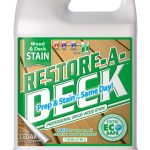

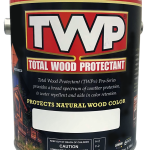
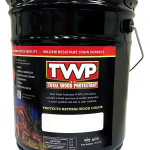
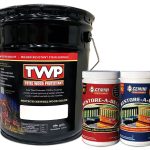
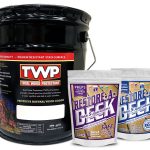
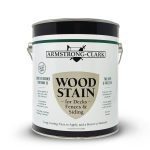
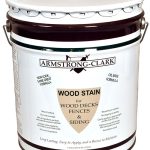
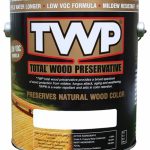
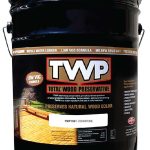
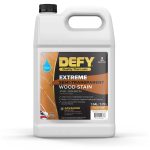
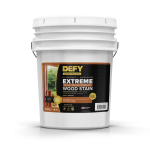
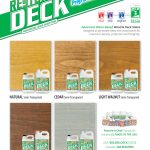
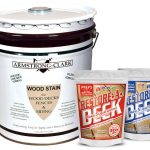
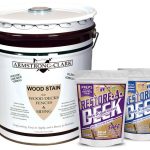
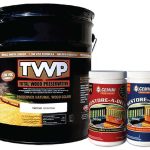


Scott-
I plan on installing new Alaskan yellow cedar 5/4 x 6 decking on an elevated deck in mid-coast Maine. I had thought to back prime the stock, install it in September and clean and finish it in the spring using an Armstrong-Clark product. What is your opinion about back priming? I am concerned about unbalanced drying resulting in cupping.
Thanks
Back priming? Not sure what you mean. You cannot apply a primer before applying a penetrating deck stain.
Scott, I live in Ontario and I replaced the deck boards last summer. I just completed about 90% cleaning of about 700sf of pt deck boards using OxiClean solution. I am reluctant to proceed to apply stain due to the likely unfavorable weather and temp range 40-60F at this time. Assuming that I need to wait till next spring to apply a stain sealer, is it advisable to treat the deck with wood deck brightener now or should I wait till spring to do it all over again. At this point, I am leaning towards “Restore a deck” or “Defy Extreme Stain” for a water based natural or cedar look. Thank you in advance for taking the time to respond, Andre
Just prep and stain all in the Spring.
Thank you for your prompt response. Andre
Scott, Would you consider using OxiClean again in the spring be a good product to use before applying a Wood Deck Brightener followed by a Stain Sealer
Oxiclean is not a proper deck cleaner. Use a deck cleaner that is made for wood and then a deck brightener.
https://www.deckstainhelp.com/best-deck-cleaners/
Comparing TWP 1000, 1500, and Semi-solid, which one lasts the longest before a maintenance cost is noticably needed?
They will all last the same before recoating is needed but the semi-solid will hold color longer since it has more pigment.